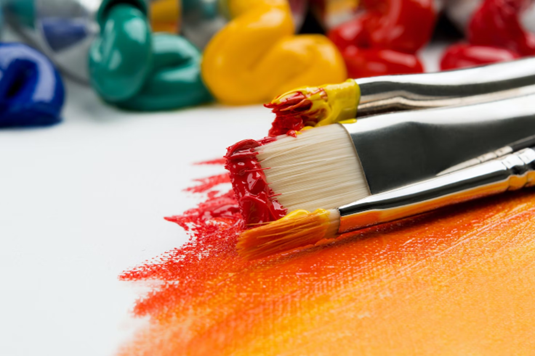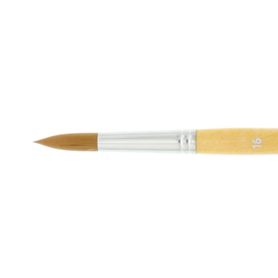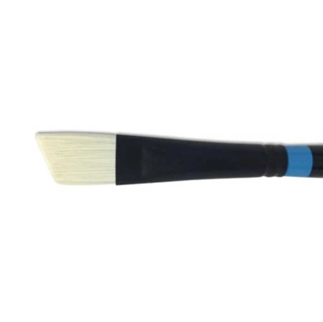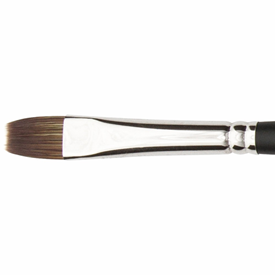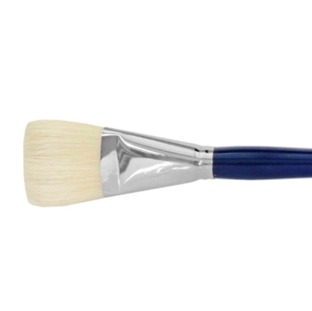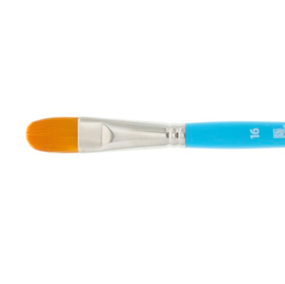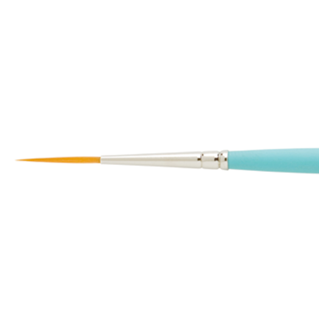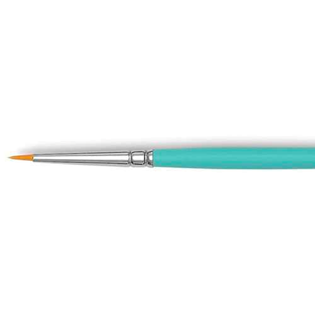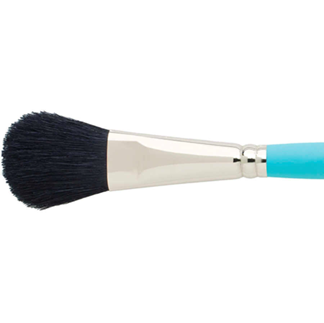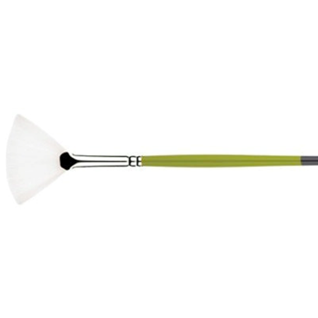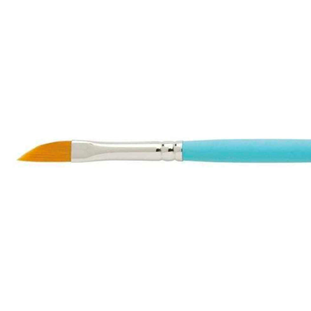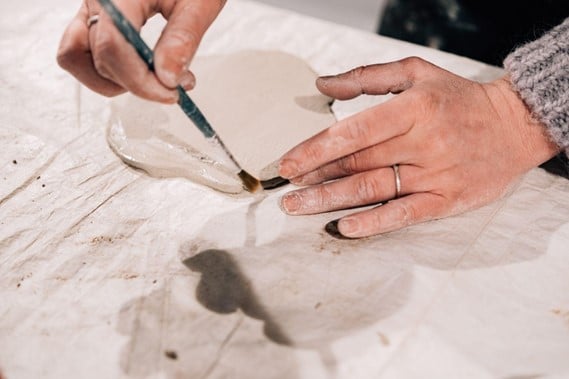There are many different types of paint brushes available for the most common artist paints, including acrylic paint, watercolour paint and oil paint. If you’re a beginner, the variety of paint brushes can be overwhelming, and you might be unsure about which brush is best or what effects you can achieve with all the different types. To help you out, we’ve created this easy-to-follow guide so you can find the best brushes for your next masterpiece. Read on to learn more.
Overview:
- Round brush
- Angled brush
- Bright brush
- Flat brush
- Filbert brush
- Liner brush
- Spotter brush
- Mop brush
- Fan brush
- Dagger brush
How do I choose the right paint brush?
Choosing the right brush will all depend on the type of paint you are using and the effects you would like to achieve. At Art to Art, we offer every type of paint brush suited to all paints.
We recommend using solid to medium length bristles for oil based paints, synthetic brushes for acrylic paint and natural hair or synthetic watercolour brushes for watercolour paints.
10 different types of paint brushes
1. Round brush
Round brushes feature a round shape with a blunt tip. These paint brushes are perfect for fine detail (with gentle pressure) and applying thick straight lines. These are the most common types of paint brushes for acrylic or gouache paint. You can purchase these in different sizes, depending on the effect you want to achieve.
2. Angled brush
This brush features a slanted tip, which is ideal for curved strokes and filling any kind of area within your painting. These are also most commonly used for applying crisp and straight lines.
3. Bright brush
The bright brush is short in length and has a completely flat edge. This is ideal for creating short, straight and controlled strokes. This brush can be used with all types of paint, however it is more suited for thicker paints such as acrylic and oil paint. These are great for adding texture to your paintings, whether you’re using canvas or fabric!
4. Flat brush
Flat brushes are very similar to wash brushes, both featuring long and thick bristles with a rounded edge. They are incredibly versatile and are great for covering large surfaces, making long and bold strokes and even applying detailed and fine lines. These brushes are very easy to use and are recommended for beginners who are looking to apply smooth patches of colour.
5. Filbert brush
Filbert brushes contain long to medium length bristles shaped into a rounded tip. These are a staple amongst many painters, especially figurative painters as they can be used for a variety of techniques. Filbert brushes are great for creating thin and detailed lines with gentle pressure and broad strokes when used on its flat side.
6. Liner brush
If you’re looking to add delicate details to your painting, a liner brush is your go-to! These types of paint brushes have long thin bristles, shaped into a fine point. Liner brushes, also known as rigger brushes, are great for creating long, smooth and thin strokes. Artists love using these for calligraphy, lettering and any fine detailed work.
7. Spotter brush
Spotter brushes are rounded brushes that feature small bristles and a pointed tip. They allow artists to produce controlled strokes and are great for accessing small areas in a painting. Painters use these for precision work, however they can also be used to produce controlled and bold strokes.
8. Mop brush
These paint brushes have full and thick bristles that are oval in shape. Mop brushes can be used at different angles and pressures to create broad to narrow strokes. These brushes are most commonly used to cover large areas, as well as for blending and soft transitions.
9. Fan brush
Fan brushes have splayed bristles that are flat and round in shape like a fan. These brushes are popular for creating interesting textures such as leaves on trees and other elements in landscapes. They are also great for blending, feathering and softening hard edges in paintings.
10. Dagger brush
Dagger brushes are long, flat and represent the shape of a dagger. They can be used on different angles and pressures to create precise line details and broad strokes. These are also great for creating special effects, especially in watercolour paintings.
We’re your one-stop shop for paint brushes
Now you know the 10 different paint brush types and their uses, you should be confident with choosing the right ones for your next masterpiece. At Art to Art, we stock a wide variety of paint brushes and other painting accessories. From art paper and paint sets to art mediums and more - we’ve got you covered! Shop our art supplies online today and get same-day dispatch Australia-wide and free shipping when you spend over $100. If you have any other questions, please do not hesitate to contact us now.
What type of paint brushes are best?
There isn't one type of paint brush that is best, because it really depends on what you’re looking to achieve. If you’re looking for high quality options, some of the most popular brushes we stock include:
- Princeton Neptune 4750 Watercolour Brushes
- Neef 95 Stiff Synthetic Brushes
- Princeton Select 3750 Mixed Media Brushes
- Princeton 6500 Aspen brushes
- Princeton Velvet Touch 3950 Brushes




